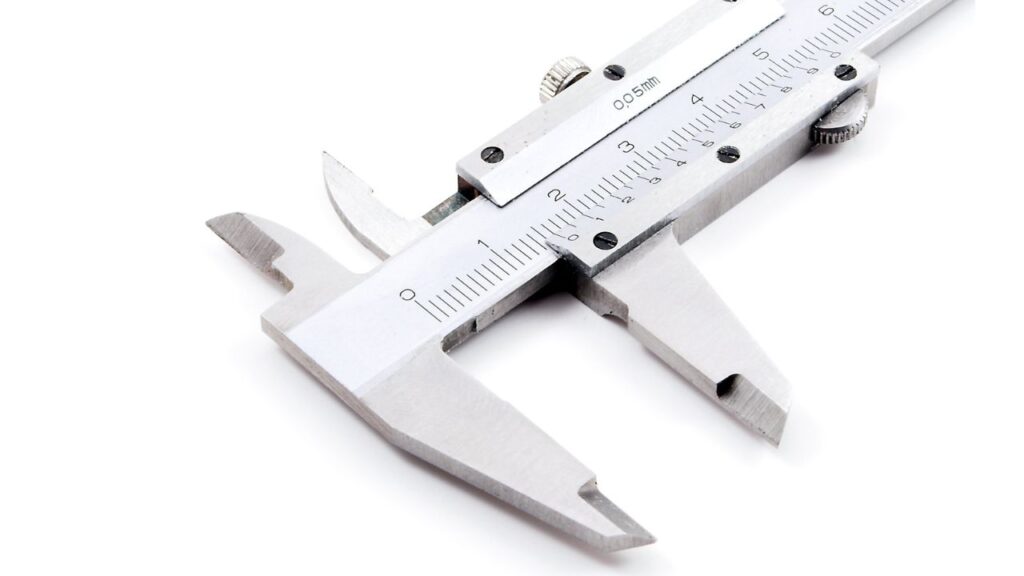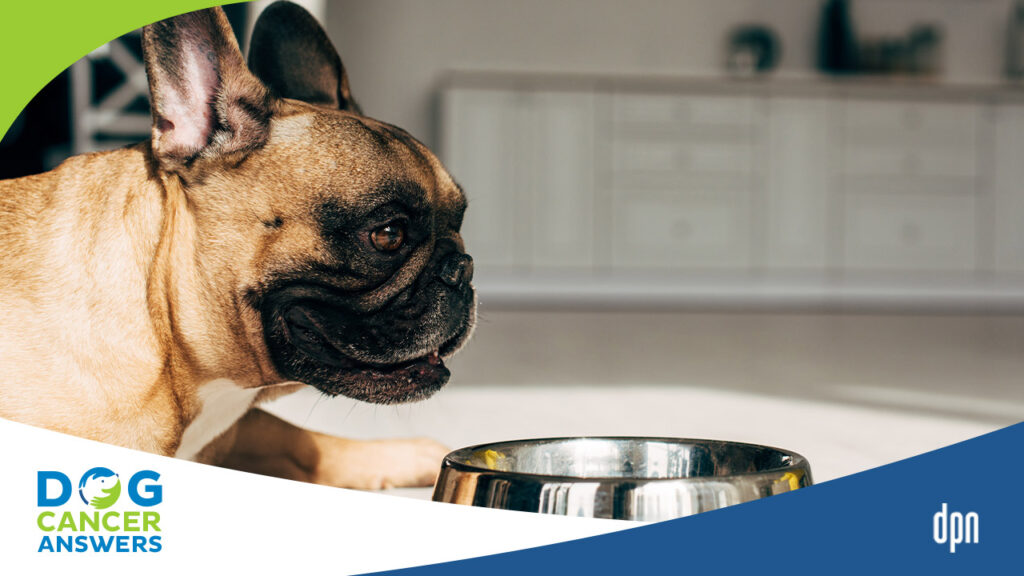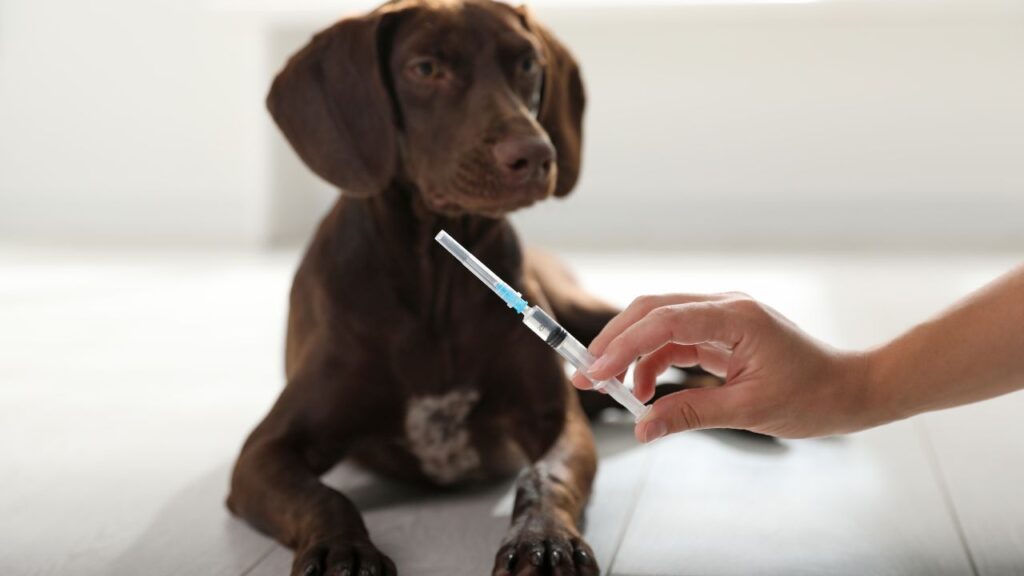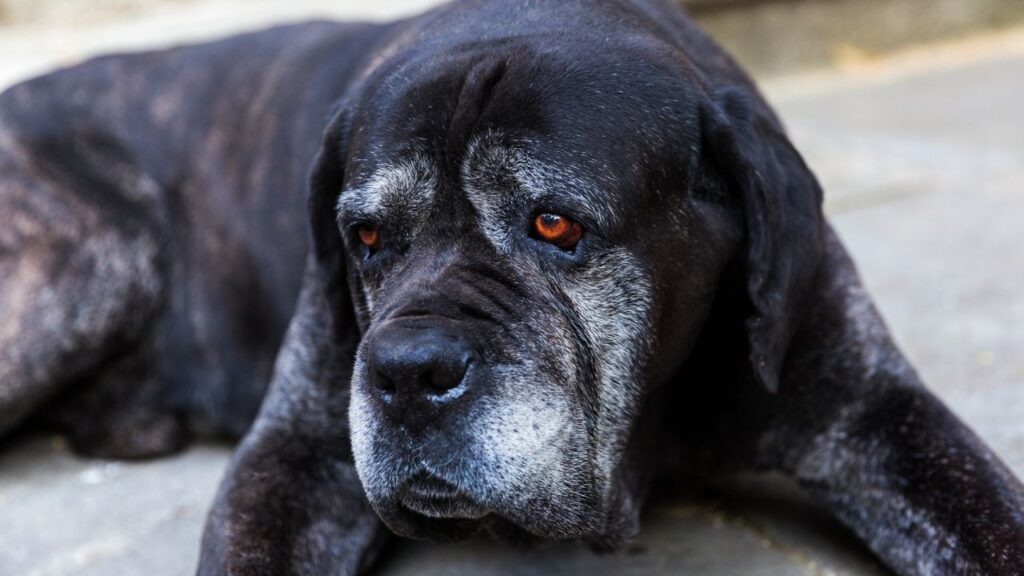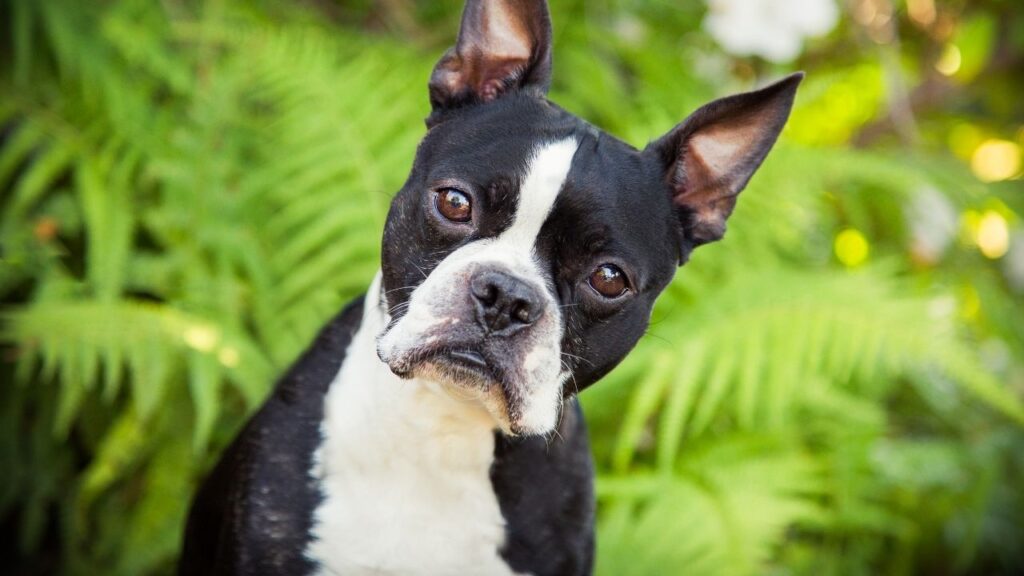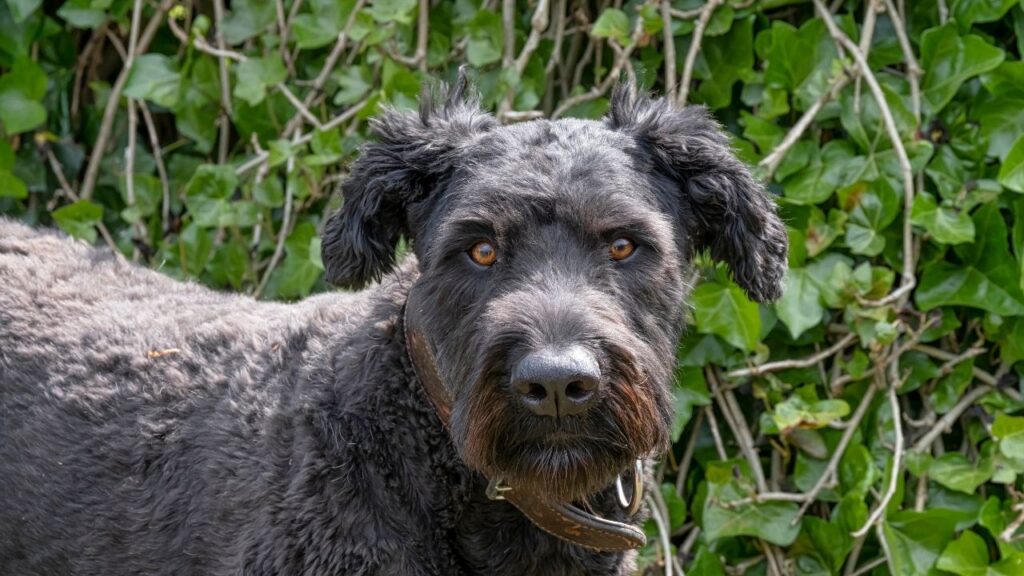Thyroid cancer in dogs is uncommon. If your dog is one of the unlucky ones who develops a cancerous thyroid tumor, there are several promising ways to effectively treat this cancer.
Key Takeaways
- Many dogs with thyroid tumors have no symptoms at all. In advanced stages, dogs may experience coughing, gagging, difficulty swallowing, change in bark, loss of appetite, and facial swelling
- Dogs with thyroid cancer that are caught early can live for three years with a good quality of life. Dogs with aggressive forms of thyroid cancer may have spread and significant symptoms of the cancer within six to twelve months.
- The cause of thyroid cancer in dogs is unknown; however, hormone disturbances may play a role.
- Dogs that have surgery to treat thyroid cancer can live up to three years.
- Thyroid cancer can spread within a few months.
- Signs that thyroid cancer has spread include decreased appetite, weight loss, lethargy, difficulty swallowing, enlarged lymph nodes, cough and difficulty breathing.
- The best treatment for thyroid cancer depends on the size and extent of the tumor. Generally, surgery is recommended, sometimes with follow-up radiation and chemotherapy.
Uncommon, But Good Outcomes Are Possible
Thyroid cancer in dogs is uncommon, and early diagnosis really helps with outcomes.
The Thyroid
The thyroid gland has two lobes and is located on either side of the trachea (windpipe) in the dog’s neck. The gland serves a primary function of making thyroid hormone, which helps to regulate the body’s metabolism.1
With early diagnosis, life expectancy after treatment can be one to three years.
Thyroid Tumor Types
Tumors of the thyroid gland can be either benign (not cancerous) or malignant (cancerous).
- Benign thyroid tumors are often called adenomas. They will not spread to other tissues or other parts of the body. Benign thyroid tumors do not usually have a long-term effect on a dog’s health. About ten percent of canine thyroid tumors are benign.
- Malignant thyroid tumors are a form of cancer called carcinoma. They may affect one or both lobes of the thyroid. Carcinomas can potentially infiltrate nearby tissues and organs aggressively (local invasion) and spread to distant places (metastasis).2
Ectopic Thyroid Tissue
In rare cases, dogs may have small amounts of thyroid tissue, called ectopic thyroid tissue, in other body areas. This tissue is also at risk of developing cancer, often on the tongue, but that risk is quite low.3
Thyroid Cancer in Dogs Is Locally Invasive and Metastatic
Thyroid cancer in dogs is locally invasive, often growing extensively into nearby tissues.2,4
The tumor also has great potential for metastasis and frequently spreads to other organs, including the trachea and esophagus, the muscular tube that connects the throat to the stomach.1-4
The tumor can also spread to distant body areas, including the lymph nodes and lungs.
About one in three thyroid carcinomas have already metastasized by diagnosis.4
Canine thyroid cancer treatment includes combination therapies involving surgery to remove the tumor, if possible, plus complementary treatment with chemotherapy and/or radiation.
Thyroid cancers in dogs tend to occur later in a dog’s life, often beyond age ten. With early diagnosis, life expectancy after treatment can be one to three years.4
Stats and Facts About Thyroid Tumors In Dogs
The occurrence of thyroid tumors in dogs is uncommon, only accounting for 1.2%-3.8% of all canine tumors.2,3,5
- Thyroid gland tumors are most commonly seen in older dogs.
- No gender predilection has been reported.4
- Thyroid carcinomas can be classified in different ways, such as papillary, follicular, compact, and anaplastic. Follicular and compact carcinomas are most frequently found in dogs.4
- Some thyroid gland tumors are quite aggressive; about 80% of cases eventually metastasize.4
What Causes Thyroid Cancer in Dogs?
The cause of thyroid carcinoma is unknown because, like all cancers, thyroid cancer is a multifactorial disease.1
However, disturbances in thyroid-stimulating hormone (TSH), the hormone governing thyroid gland function, may play a role.2
Thyroid exposure to radiation is also associated with an increased incidence of thyroid tumors.
Risk Factors
Certain breeds are predisposed to develop thyroid cancer, including:
- Golden Retrievers
- Beagles
- Boxers
- Huskies
Increased age is also a risk factor, with the median age at diagnosis being nine to ten years.1,3
Symptoms of Thyroid Cancer in Dogs
Many dogs with thyroid tumors have no symptoms at all. However, when the thyroid gland does begin to enlarge, it may be felt (palpated) by hand and feels like a firm mass(es) along the underside of the neck.2 A veterinarian should evaluate any mass in the neck area of a dog.
In advanced stages, the tumor(s) will grow into nearby tissue, such as the trachea. If the mass compresses the trachea, the dog may experience the following signs:5,7
- coughing
- gagging
- difficulty swallowing
- change in bark
- loss of appetite
- facial swelling
Although most canine thyroid tumors are malignant, they rarely produce excessive hormones. This happens in approximately 10% of cases.4 In the cases where excessive hormones are produced, dogs will experience signs associated with hyperthyroidism, including increased appetite, excessive thirst and urination, weight loss, and restlessness.
Diagnosis
Thyroid masses cause neck swelling, which can often be palpated on physical exams and sometimes seen on x-rays.
Imaging procedures like ultrasound or computed tomography (CT) scans are better than x-rays for assessing the tumor size and spread to other tissues.6
Collecting a small number of cells using a needle is known as fine needle aspiration and is a common diagnostic tool to sample tumors.
However, aspiration may not be enough to diagnose thyroid cancer, partly because thyroid masses often have a well-developed blood supply and may bleed when aspirated. This can contaminate the sample and make diagnosis difficult.
A final diagnosis is made with a biopsy, where a pathologist examines the tumor tissue sample.2
In cases where the tumor is appropriate for surgical removal entirely, the biopsy is collected at the same time the mass is removed.
Prognosis and Staging
A veterinarian examining a dog for cancer will want to assess (“stage”) the extent of lymph node involvement and spread to other organs in the body.
Staging can be expensive and involves tissue biopsy, X-rays, CT scan and ultrasound to determine the extent of tumor activity and affected areas of the body.2
The benefit of staging is that owners and veterinarians will fully understand the dog’s cancer status. This information can give you a more accurate idea of how they might respond to treatment options.
However, staging is expensive and invasive and does not always give information that will change the outcome. If financial resources are limited, allocating money for supportive care may be the better choice.
The prognosis for dogs with thyroid cancer depends on several factors, including cancer type, size, amount of spread to other tissues, and selected treatment therapy.
Combination therapy with surgery, chemotherapy, and radiation have all been shown to be effective at treating thyroid cancer.2,3
The prognosis can be influenced by the degree of involvement with other tissues.
The median survival time of dogs treated with surgical removal is about three years.3,4
However, the survival rate declines to six to twelve months with more aggressive tumors.3
Treatment
Sometimes, cancer treatment can provide an actual cure, and sometimes this cannot always be achieved. Your veterinarian will recommend treatment options based on how big the tumor is, how invasive it is to surrounding structures, and the presence of metastatic spread to other tissues and organs.
If your dog’s thyroid tumor is easily moved on physical exam, it is a good candidate for surgical removal.
The size of a thyroid tumor may influence treatment choices and outcomes. Larger tumors, in general, have a greater potential for metastatic spread.7
- Surgical removal is recommended if tumors can be easily moved on physical exam.
- Suppose the tumor is anchored in place and difficult to move or has invaded neighboring tissues. In that case, the ideal treatment plan is radiation therapy to shrink the mass and then surgery afterward (if the tumor responds to the radiation).
- In cases where surgery is not possible, chemotherapy is then advised.
- Smaller tumors (< 20 cm3) without blood vessel involvement have a lower metastatic risk and chemotherapy after surgery is not routinely recommended.
- Large tumors with evidence of blood vessel involvement have a higher risk of spread and follow-up chemotherapy and radiation therapies are encouraged to minimize the spread of the disease.
- If surgical margins are not free of tumor cells, then combination radiation therapy and chemotherapy is considered.3
Surgery
Surgical removal of thyroid tumors is challenging for veterinary surgeons because the tumors can infiltrate nearby blood vessels or other tissues. The tumors can be large and difficult to remove, so referral to a board-certified veterinary surgeon is recommended.6
A pathologist will examine the removed tumor to determine a specific tumor type. This evaluation (biopsy) may include special stains (immunohistochemistry) that help the pathologist determine key factors regarding cancer cells and their activity.
Kate Basedow explains the best home care for dogs who've undergone surgery in this episode of DOG CANCER ANSWERS.
After Care and Outcomes
Recovery may require overnight monitoring in the hospital. After surgery, a dog will have a bandage around its neck. Tension in the neck area should be avoided. A harness may be used instead of a collar.6 Physical activity should be limited during recovery.
Specific medications may be needed following surgical removal of the thyroid gland. If the thyroid gland is completely removed, a veterinarian must check calcium levels several times during recovery because a closely related organ, the parathyroid gland, may also be removed.
Dogs with both thyroid glands removed may experience low calcium (hypocalcemia) or low thyroid hormone levels (hypothyroidism), requiring medication treatment.6
Complications resulting from thyroid tumor surgery in dogs include bleeding or damage to nerves in the neck responsible for breathing and swallowing. Finally, there can be some swelling at the incision site on the neck.
Chemotherapy
Chemotherapy is used as a stand-alone therapy or frequently combined with surgery and radiation treatments.
Doxorubicin and cisplatin each caused 30-50% of thyroid carcinomas to decrease in size by about half. Other useful chemotherapy agents include actinomycin D and mitoxantrone.2
Immunotherapy
Palladia (Toceranib) is an oral medication that has reported ability to treat dogs with macroscopic thyroid carcinoma. Macroscopic means the tumor is large enough to see with the naked eye.
- The overall response rate to Palladia in dogs with macroscopic thyroid carcinoma is around 25-46%, with an additional 42-53% of dogs experiencing stable disease.
- The median duration of response is around seven months to 2.8 years, and the median survival time is around 1.5 to 3 years.
This class of medications (tyrosine kinase inhibitors) is also used to treat advanced thyroid carcinomas in humans.8
Radiation
Radiation therapy targets the tumor to slow cell growth. It requires light anesthesia, and three types are commonly used in dogs.
- Conventional finely fractionated radiation therapy means small “doses” of radiation given frequently. A common protocol for thyroid cancer is daily treatments for about a month. Median survival time for this protocol is 2-4 years.
- Palliative conventional radiation therapy means larger “doses” given less often. A common protocol for thyroid cancer is one treatment a week for a total of four treatments. Median survival time for this protocol is six months to almost 2.5 years.
- Stereotactic radiation therapy (SRT) uses three daily high doses of radiation. Median survival time for this protocol is around one year for dogs with or without metastasis.8
Radiation expert Jenny Fisher takes us behind the scenes in radiation therapy, commonly use to help increase survival times in dogs with thyroid cancer.
Radioactive Iodine
Radioactive iodine (I-131) treatment has been shown to be an effective adjunct to the treatment of thyroid tumors. I-131 can be utilized in patients that are poor surgical candidates or in patients where vascular invasion has been identified despite surgical removal.6
Vaccine
Currently, no vaccine is under development for treating or preventing thyroid cancers in dogs.
Diet
The most important thing when feeding a dog with thyroid cancer is to ensure the diet is complete and balanced, providing all of the nutrients that a dog’s body requires. Commercial foods should have an AAFCO Statement on the packaging guaranteeing the nutritional value of the food, and home-made diets should use recipes formulated by a veterinary nutritionist.
Supplements
There are no supplements specifically targeting thyroid cancer in dogs, but there are several supplements that might be supportive of cancer in general.
Natural and herbal remedies often lack scientific support but have anecdotal success, including prevention and slowing cancer growth.
Integrative Therapies
There is anecdotal support for the use of traditional Chinese medicines and therapies in targeting the tumor and the symptoms of cancer treatment. Modern non-invasive therapies can be coupled with Chinese remedies to promote healing.
Physical therapy, including hydrotherapy, treadmill and passive range of motion exercises, may be helpful to stimulate healing post-surgically and to help return to function if neural function, weight-bearing, and walking were compromised.
Acupuncture can be used to promote healing and total body health.
What the End Looks Like for Dogs with Thyroid Cancer
Early detection and treatment can minimize the risk of a tumor spreading. However, not all thyroid tumors respond to therapy, and not all tumors can be removed.
When thyroid tumors are not completely removed, the risk of regrowth and spread is much higher. Thyroid tumors can grow very large and press on the tissues around them. This may cause lethargy, cough and difficulty breathing, decreased appetite, and trouble swallowing.1,2
These conditions significantly reduce a dog’s quality of life and euthanasia is often elected at this stage.
Prevention Strategies
Keep your pet away from environmental toxins, which have been implicated in thyroid cancers in other species. Reduce inflammation and promote vitality with a healthy diet and supplements known to promote thyroid health. Importantly, know the signs of thyroid cancer and seek veterinary care at the earliest indication.
- Wucherer KL, Wilke V. Thyroid cancer in dogs: An update based on 638 cases (1995–2005). Journal of the American Animal Hospital Association. 2010;46(4):249-254. doi:10.5326/0460249
- What are Thyroid Tumors in Pets? Animal Cancer and Imaging Center. http://www.veterinarycancer.com/thyroid-tumor. Accessed March 7, 2023.
- Thyroid gland neoplasia. The National Canine Cancer Foundation. https://wearethecure.org/learn-more-about-canine-cancer/canine-cancer-library/thyroid-gland-neoplasia/. Accessed March 7, 2023.
- Thyroid tumors canine. Veterinary Society of Surgical Oncology. https://vsso.org/thyroid-tumors-canine#canine_thyroid_gland_tumors. Accessed March 7, 2023.
- Thyroid cancer in dogs. PetCure Oncology. https://petcureoncology.com/thyroid-cancer-in-dogs/. Published September 19, 2017. Accessed November 14, 2022.
- Thyroid Tumors. American College of Veterinary Surgeons. https://www.acvs.org/small-animal/thyroid-tumors. Accessed March 8, 2023.
- Leav I, Schiller AL, Rijnberk A, Legg MA, der Kinderen PJ. Adenomas and carcinomas of the canine and feline thyroid. The American Journal of Pathology. 1976;83(1):61-122.
- Chan C. Treatment options for dogs with unresectable thyroid cancer. The Pet Oncologist. http://www.thepetoncologist.com/blog/thyroid-carcinoma-in-dogs. Published June 29, 2020. Accessed November 24, 2022.
- Apoptogen formula for dogs. APOCAPS. https://apocaps.com/. Published February 10, 2022. Accessed November 14, 2022.
- Medicinal mushrooms (PDQ®)–patient version. National Cancer Institute. http://www.cancer.gov/about-cancer/treatment/cam/patient/mushrooms-pdq. Published July 29, 2022. Accessed November 23, 2022.
Palladia® is a registered trademark of Zoetis US
Topics
Did You Find This Helpful? Share It with Your Pack!
Use the buttons to share what you learned on social media, download a PDF, print this out, or email it to your veterinarian.


